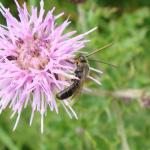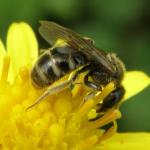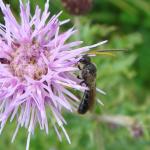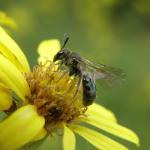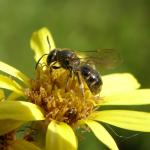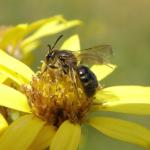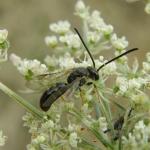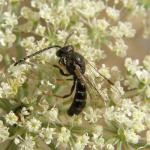England and Wales with a very few Scottish records. Widely distributed in Europe to 64°N and found eastwards to the eastern Palaearctic, including Taiwan. There is a little geographical variation resulting in subspecies being recognised for parts of Asia.
This species is not regarded as being scarce or threatened.
Frequent on calcareous soils such as chalk scarps but also found on other strata. Shows a preference for short grassland in dry areas.
Probably univoltine; the female with a long life span, appearing on the wing from mid-March to the end September and males from mid-June until early October.
The nesting biology is not well known but the species is solitary, the female digging a nest in short turf in the spring.
The species probably visits a variety flowers for nectar only.
The halictine bees Sphecodes hyalinatus and S. ferruginatus are cleptoparasites.
2006


